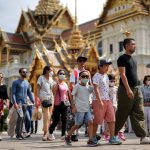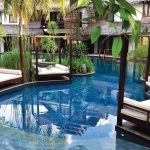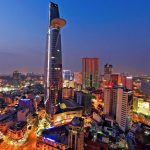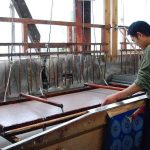Kerala trip blog — An unique look at rustic everyday life in Kerala, India
I recently returned from my first vacation to India. We took in all the sites while we were there, as most visitors do. We saw the historic town of Kochi and the backwaters of Kerala, but we also had the opportunity to meet many individuals going about their everyday lives; people who struggle to support themselves and their families.
And, indeed, many people had professions that were similar to those found in Western nations. However, we also encountered folks who were doing professions that could only be found in India. Here are some of the people I met and the occupations they do while traveling in Kerala, India.
The outdoor laundry
In Kochi, we visited a massive outdoor laundry. Doing laundry is nothing special, however, the sheer size of this operation, and its outside location, were elements I hadn’t seen before.

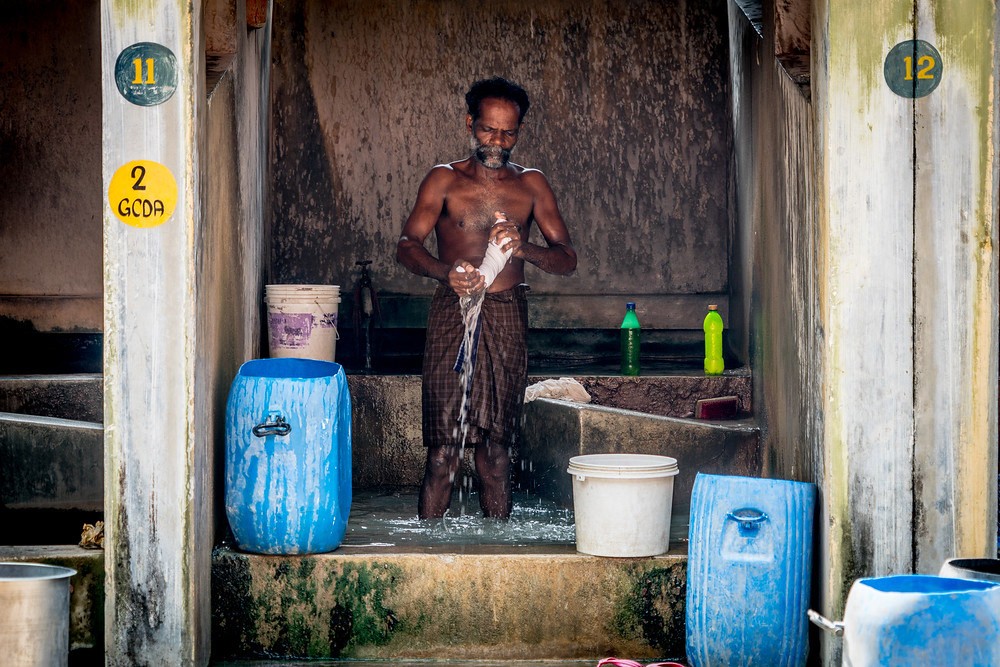
In the laundry facility there were several individual stalls where people were able to work to clean clothes.
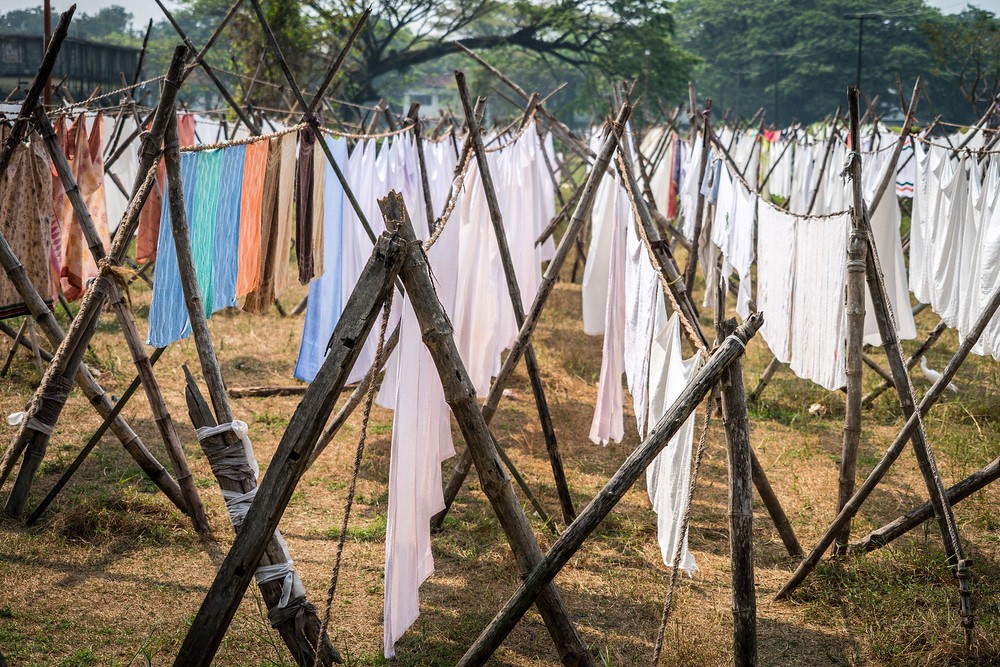
There was no mechanized washing or drying. Everything was washed by hand and air dried. This entire field was taken up by drying clothes, which were able to dry quickly in the tropical sun.
The coir factory
If you’re not acquainted with coir, it’s the coarse fiber found within coconut husks. Because it is both rigid and natural, it is frequently used for doormats. We went to a tiny coir cooperative in Kerala that handled everything from spinning the fibers to making the finished product. (I bought a doormat and took it home!)
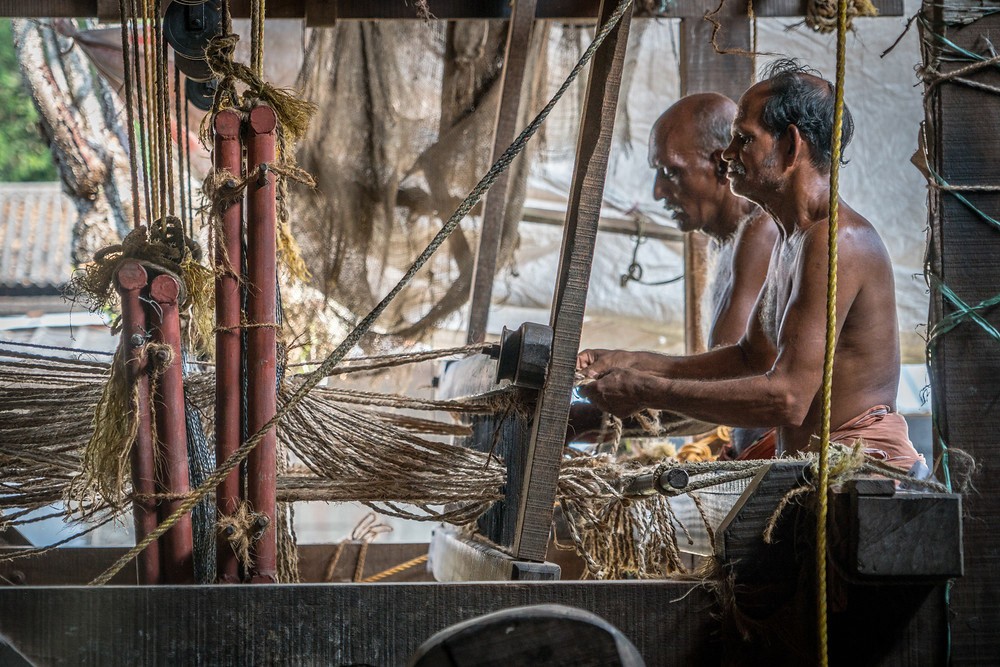
The factory’s looms were all constructed of wood. They appeared to have been in use since the nineteenth century (and very well may have been). There was little variation in the industrial technique utilized now vs what was done more than a century ago.
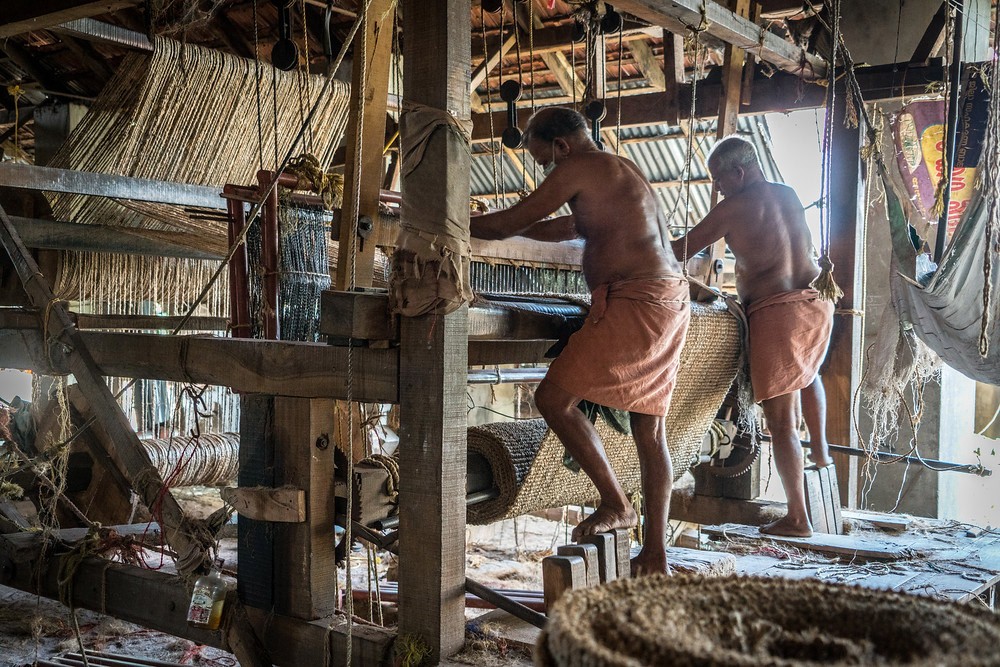
Mostly everything in the factory was run by hand. As far as I could see, these were the only machines that were run by anything other than human power.
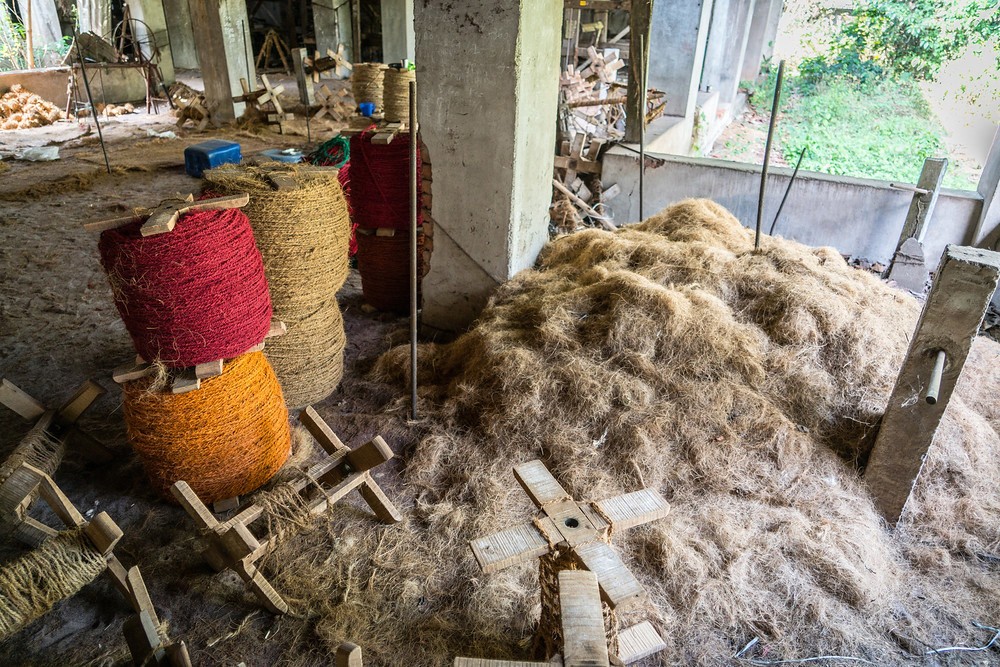
Here, you can see the starting product on the floor, and the refined product on the large spools. Once the coir is spun and wound into rope, it is then woven into mats and other products.The copra factory
The copra factory
Every part of the coconut is used. As seen above, the coir is used to as a textile, but the shell and meat (copra) is used as well.Here
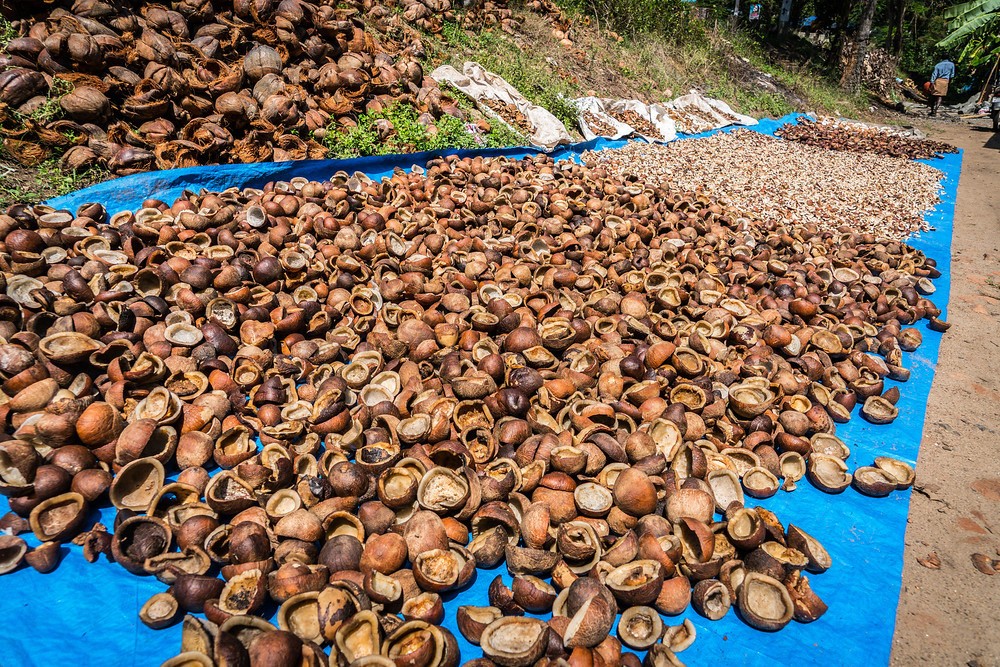
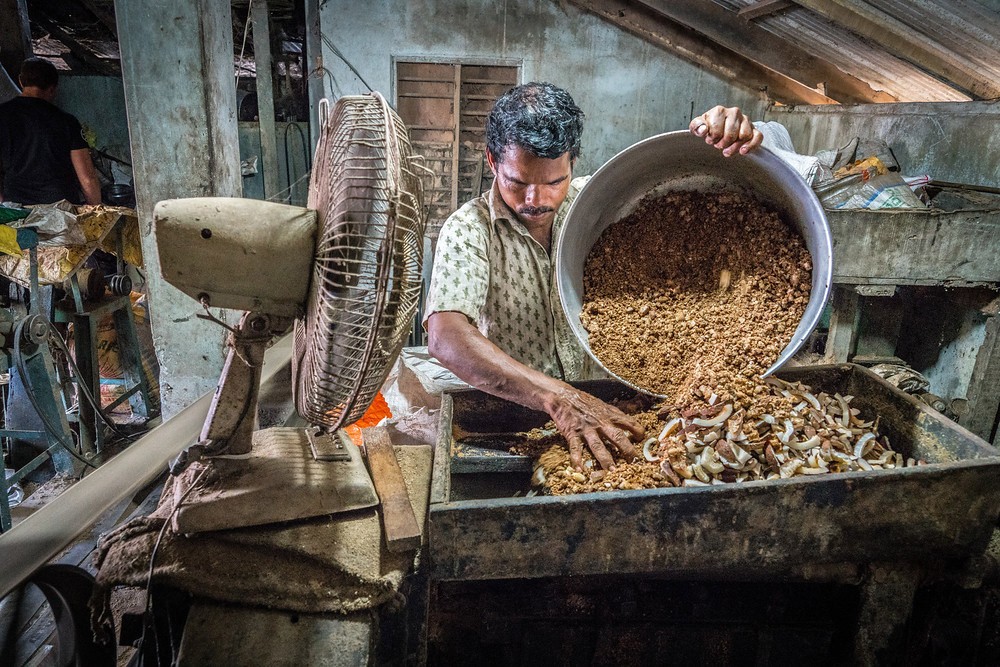
Coconut oil is extracted from the flesh of the coconut. It is then placed in a (very ancient) mechanical press, which removes the oil from the coconut meat. Once the oil has been removed, the leftover copra can be utilized as animal feed. During the extraction process, a thin line of oil is formed.
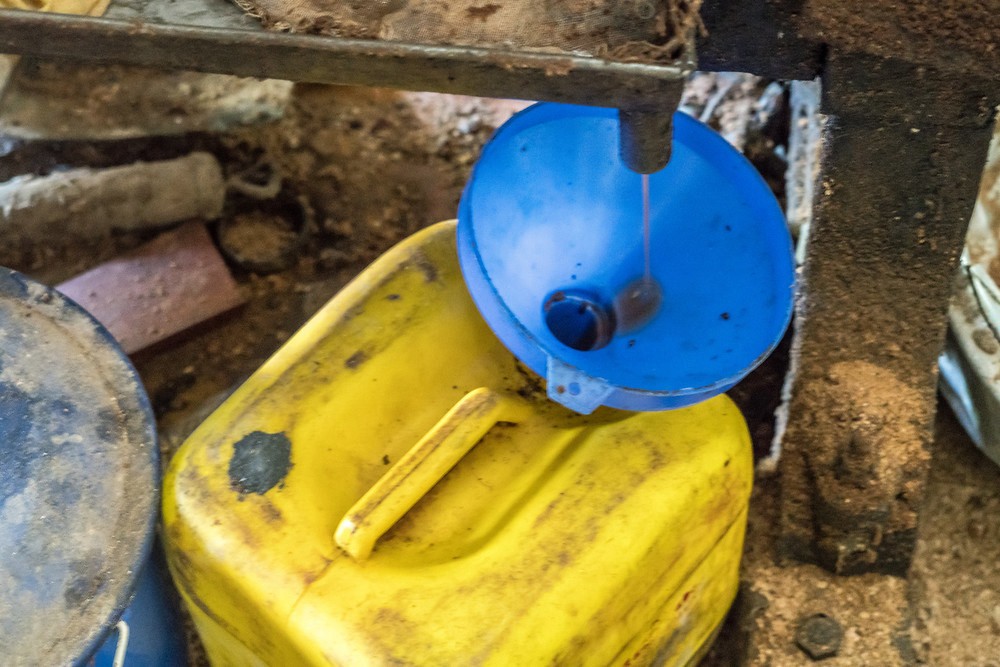
The amount of oil extracted seems quite small in comparison to the amount of coconut going in. However, the value of the oil is much higher than the original product.
Clam fishing
During one of our special National Geographic experiences, we visited some clam fishermen in Kerala. The process was not at all what I expected, and showed a surprising amount of ingenuity in the processing of the molluscs.
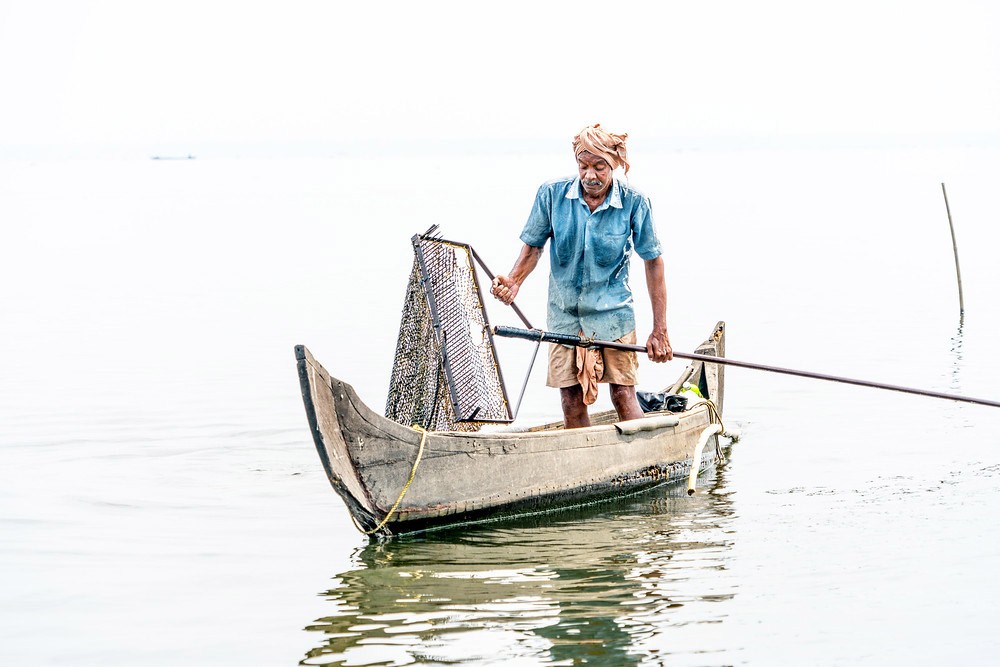
The procedure begins with removing the clams from the water. The fisherman use a contraption that resembles a rake and is linked to a long pole by a big net. They then bury the rake in the mud at the lake’s bottom and scoop out the clams.
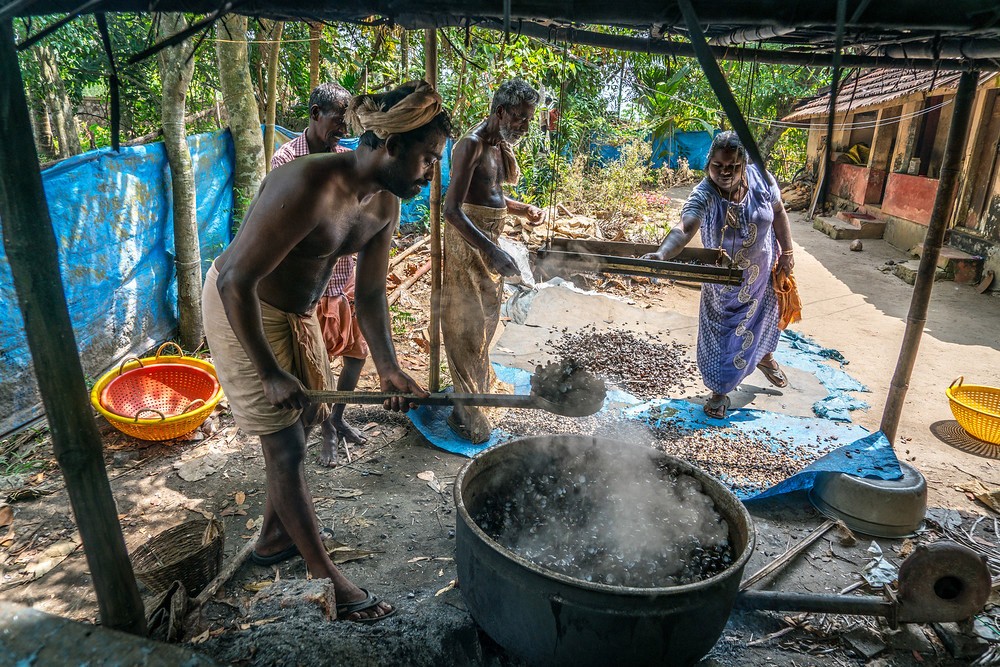
The clams they were harvesting were pretty little, around the size of zebra mussels, and I wasn’t sure how they were going to get enough flesh out of such tiny critters. The remedy was straightforward. To begin, they cooked the clams in a large saucepan, which pried open the shell’s two halves. Shaking the flesh out of the shells
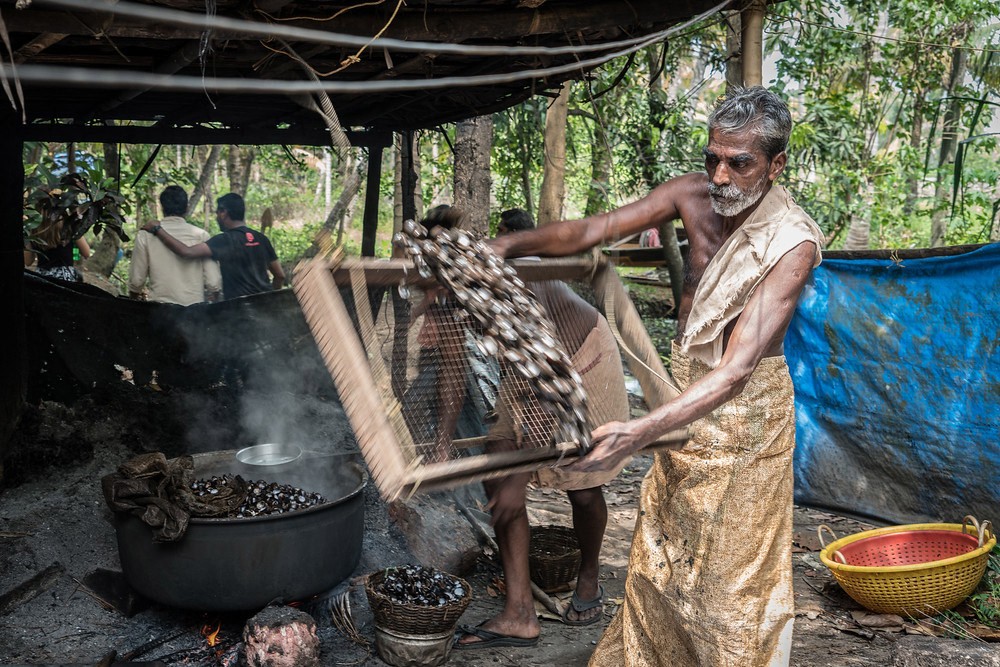
The final step was placing the opened, heated clams into a giant sifter. The sifter would shake loose the meat, which would then fall through the holes and be collected on a tarp. Brilliant!
The fish market
Like many coastal communities around the world, Kerala has a fishing fleet and fish markets. While there are many similarities to fish markets around the world, there are some things that are unique to Kerala.
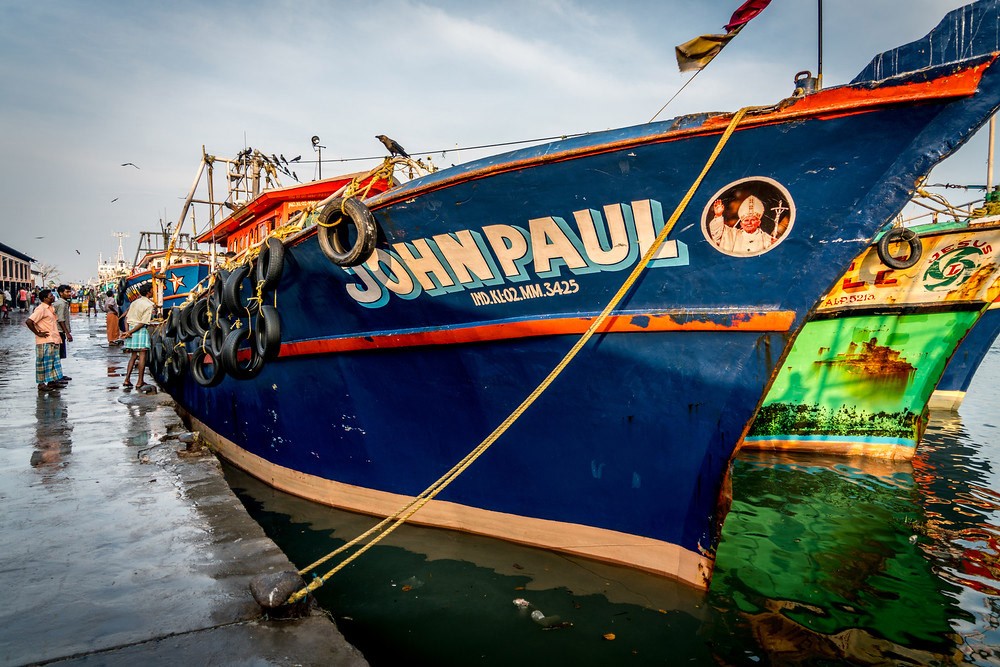
While most of India is Hindu or Muslim, there is a significant population of Christians in Kerala. Many of the boats were named after Christian themes. India is probably not where most people would expect to see a boat named after a Polish pope!Rows of fish stacked on
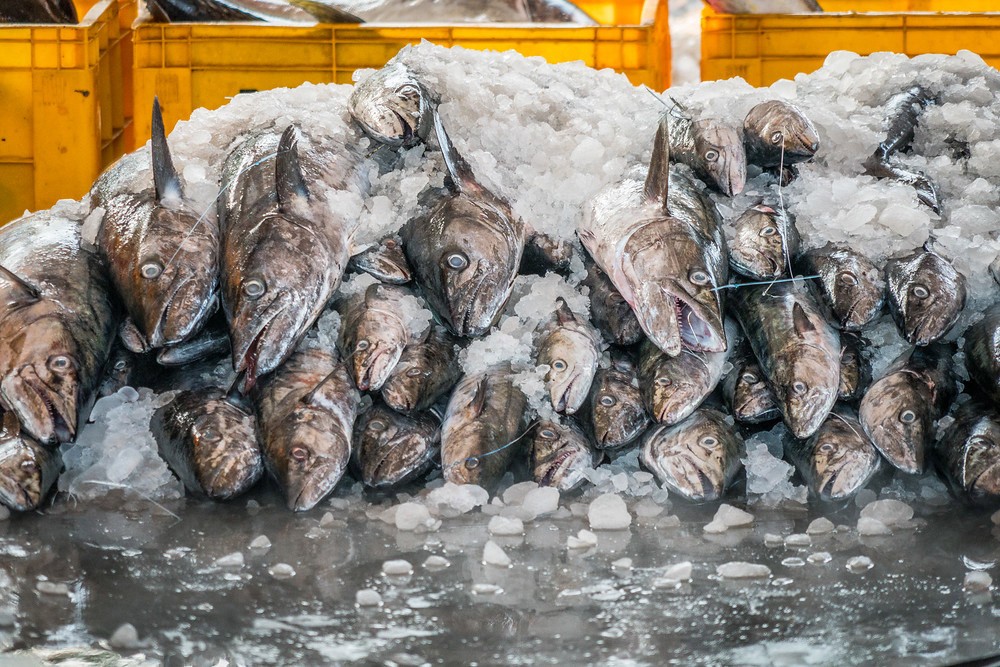
Where we were used to seeing more simple methods in many of workplaces we visited, the fish market used modern techniques of refrigeration and cooling.

Once the morning’s catch has been brought in, it’s shipped by truck to markets and restaurants all over Kerala.
Traveling isn’t only about visiting UNESCO World Heritage sites and historical attractions (though I like doing that as well), but it’s also about witnessing how people from different cultures and regions live and work. I’m sure we just touched the surface of the many vocations available to Kerala residents, but what I saw was a unique perspective on life that I am happy to have had the opportunity to witness.












